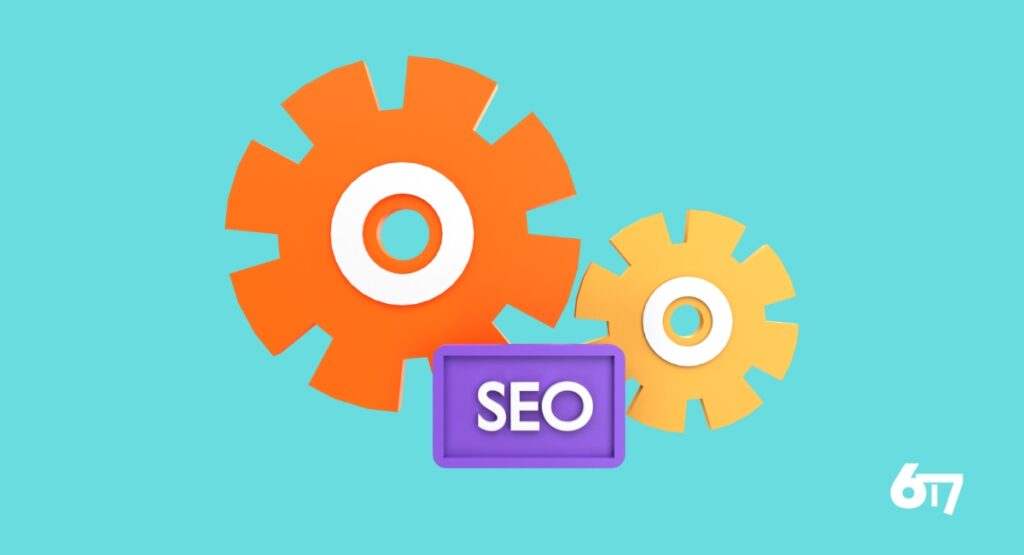Search Engine Optimization, or SEO, is the process of optimizing a website or online content in order to improve its visibility and ranking in search engine results pages.
The methods of SEO work on some crucial factors that are designed to help search engines understand the content of a website and determine its relevance and authority in relation to specific search queries.
Below, we’ll dive into the SEO key factors that impact search engine rankings.
By the end, you’ll have a better understanding of how does SEO optimization work and drive more traffic to your site.
In the journey, you will see –
8 Core Elements Behind SEO in 2023
Apart from the search engine elements, these 8 elements control everything inside of your website and page.
1. URL structure
URL structure refers to the way that URLs (Uniform Resource Locators) are formatted and organized on a website. A URL is the web address that users enter into their browser to access a specific web page on your site.
A well-structured URL should be simple, easy to read, and contain relevant keywords that accurately reflect the content on the page.
Keep your URLs concise, like making them easy to read and understand to search engines. Experts suggest that making a URL under 60 characters, that index pretty well.
You can always use multiple hyphens to separate the URL characters. It helps search engines to work with your content.
2. Keyword Research
Keyword research involves identifying the phrases and terms that your target audience is searching for online. It’s essential to conduct thorough keyword research to optimize your website’s content for the right keywords.
This will help ensure that your website appears in the search results when people search for those keywords.
It’s hard to get relevant keywords for content creation, so use a keyword-generating tool to get the best keywords. There are many free and paid keyword researching tools available in the market, like Google Keyword Planner, Ahrefs, SEMrush, and Ubersuggest.
From our experience, Ahrefs is the best keyword research tool out there.
3. Content Creation
Creating high-quality, relevant, and engaging content is an essential aspect of SEO. This includes creating blog posts, articles, infographics, videos, and other types of content that provide value to your audience and target the right keywords.
You can create content that targets long-tail keywords. It can help to improve your website’s visibility and relevance for more specific search queries, which can drive more targeted traffic to your site.
Use simple and concise language that is easy to read and understand. Avoid using jargon or technical terms that may be unfamiliar to your audience.
Another thing to consider is adding different visual aspects, like adding relevant videos and photos to your content that makes it more definitive and interactive.
It takes experience, professionalism, and audience understanding to create high quality content that actually works and drives traffic.
4. Link Building
Link building refers to the process of acquiring backlinks from other websites. This is an essential aspect of SEO because it helps search engines determine the authority and relevance of a website.
There are 2 types of link building,
- Internal link building.
- External link building.
When creating links that connect within your website pages are defined as internal link building.
Internal linking helps to establish a website’s information hierarchy and can help spread link equity (also known as link juice) throughout your website, which can help to improve your website’s overall authority and ranking potential.
External link building, also known as backlinking, is the practice of acquiring hyperlinks from other websites to your own website. These links are also known as “inbound links” or “incoming links”.
External link building is an important factor in search engine optimization as search engines use these links to determine the relevance and authority of a website.
5. Local SEO
Local SEO is a critical element for businesses with a physical location or a local presence.
This involves optimizing your website and Google My Business listing for local search results to ensure your business appears in the top search results for local queries.
Different search ranking factors can help you improve your local SEO, like Optimize Your Google My Business (GMB) listing.
Google My Business is a free tool that allows businesses to manage their online presence across Google, including search and maps. Claiming and optimizing your GMB listing can help to improve your visibility in local search results,
Moreover, you can ensure consistent NAP (Name, Address, and Phone Number) information.
Inconsistent NAP information can lead to confusion and negatively impact your search engine rankings.
6. Analytics and Reporting
Analyzing and reporting on your SEO efforts is essential to measure the success of your campaigns.
By tracking metrics such as traffic, rankings, and conversions, you can determine what’s working and what needs improvement.
It can help you to measure the success of your SEO efforts. By tracking key metrics such as organic traffic, rankings, and conversion rates, you can see whether your SEO efforts are paying off and adjust your strategy as needed.
You will always know what you need, how you can achieve, making it easy for you to stay ahead of the competition.
7. Social Media
Social media is an essential part of SEO as it helps to increase brand awareness, drive traffic to your website, and build backlinks.
By creating and sharing valuable content on social media, you can increase engagement and reach a broader audience.
There are many social media platforms available that will aid you to create an audience for your product or services. Selecting the right platform for your content is also crucial because you will target an audience who are relevant to your target audience and industry.
For example, if you are a B2B company, LinkedIn may be a better platform than Instagram.
8. On-page Optimization
On-page SEO refers to the optimization of individual web pages to improve their ranking on search engines and attract more organic traffic.
It focuses on the content and structure of a webpage, and includes a range of tactics that aim to make a webpage more search engine-friendly.
On-page SEO includes a variety of things like,
- Title Tags and Meta Descriptions: Creating compelling title tags and meta descriptions that accurately describe the content of a webpage and encourage users to click through to the page.
- Content Optimization: Creating high-quality, informative, and engaging content that is optimized for search engines and provides value to the user.
- Image Optimization: Optimizing images with relevant alt tags and file names to help search engines understand the content of the page and improve accessibility.
- Meta Description: well-crafted meta description can help to improve the visibility and relevance of a webpage in search engine results, and can lead to increased organic traffic and engagement on your website.
- Schema Markup: Adding schema markup to your pages can help search engines better understand the content of your pages and display rich snippets in search results. This can help to increase click-through rates and drive more traffic to your website.
So, Can You Use These SEO Factors on Your Website?
In 2023, it’s all about how well you can understand the working functions of SEO and execute it on your site.
Only, revolving with old methods might not work and eventually failure will occur. By following above best practices and staying up-to-date with the latest trends and techniques in SEO, you can improve their search engine rankings and drive more organic traffic and engagement on your website.
Was our article helpful? If you have any suggestions, please let us know in the comments.


